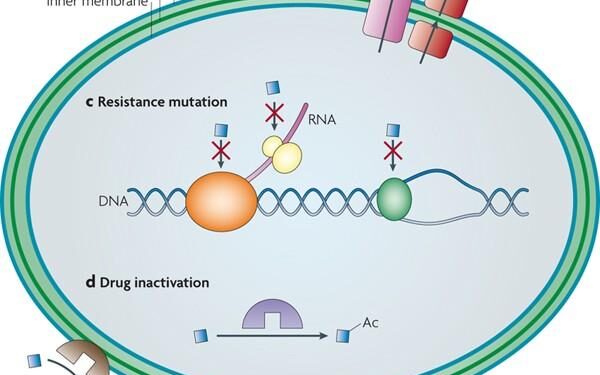Antibiotic Resistance Genes Found in Urban Rivers with Black-Odor Water in Harbin, China
In a concerning revelation, researchers have identified the presence of antibiotic resistance genes in the urban rivers of Harbin, China, particularly in areas plagued by the notorious phenomenon of black-odor water. This alarming finding raises vital questions about the impact of urban sewage and inadequate waste management on water quality and public health. The study, recently published in ScienceDirect, underscores the urgent need for improved oversight of water pollution in rapidly urbanizing landscapes. As cities worldwide grapple with similar challenges, the implications of these findings extend far beyond the banks of Harbin’s rivers, potentially signaling a global health threat in the ongoing battle against antibiotic resistance.
Exploring the Hidden Threat of Antibiotic Resistance in Harbin’s Polluted Rivers
The urban rivers of Harbin are revealing a disturbing trend as research highlights the prevalence of antibiotic resistance genes in waters plagued by pollution. This finding raises alarms over the potential health threats posed not only to ecosystems but also to human populations reliant on these water sources. The study outlines the correlation between the high levels of pollutants and the emergence of antibiotic-resistant bacteria, illustrating that the deteriorating conditions in these rivers create a perfect storm for the proliferation of resistant strains. With the alarming rise of antibiotic resistance globally, the situation in Harbin serves as a critical warning sign of what could unfold if immediate action is not taken to curb contamination and restore water quality.
The distribution of these antibiotic resistance genes across various sampling sites in the affected rivers paints a concerning picture of environmental health. Preliminary results indicate that locations near industrial discharge points and untreated sewage outlets exhibit significantly higher frequencies of resistance genes. Key contributing factors include:
- Industrial waste disposal directly introducing resistant bacteria.
- Aging and ineffective wastewater treatment plants failing to remove contaminants.
- Public health practices that underestimate the risk of antibiotic misuse.
In order to tackle this hidden threat, comprehensive monitoring and innovative remediation strategies are essential. Local authorities and stakeholders must prioritize the implementation of sustainable practices to reverse the trend of pollution and safeguard public health.
Mapping the Distribution of Resistant Genes Amidst Urban Wastewater Challenges
In the urban rivers of Harbin, China, researchers have pinpointed significant findings regarding the presence of antibiotic resistance genes (ARGs) amidst the complex interplay of urban wastewater challenges. The black-odor water, a clear indication of severe pollution, serves as a conduit for the distribution of these resistance genes, raising alarming concerns for public health and environmental safety. As wastewater treatment processes are often overwhelmed, the untreated or partially treated effluent introduces a cocktail of ARGs into the aquatic ecosystems. The study outlines that key urban zones contribute disproportionately to the prevalence of these resistant genes, illuminating the urgent need for improved wastewater management strategies.
Geospatial analyses conducted as part of the investigation reveal distinct hotspots where the concentration of ARGs is alarmingly high. In various sampling points across the city, the research team documented the following findings:
- Locations with the highest resistance gene diversity: Notably near industrial discharges and densely populated areas.
- The correlation between wastewater influx and gene prevalence: Areas receiving significant untreated wastewater consistently showed higher levels of resistance.
- Seasonal variations: Increased levels of resistance genes during rainy seasons, indicating runoff contributions.
| Sampling Location | ARG Concentration (copies/ml) |
|---|---|
| Site A (Industrial Area) | 1,256 |
| Site B (Residential Zone) | 874 |
| Site C (Near Treatment Plant) | 550 |
| Site D (Rain-affected Area) | 1,457 |
Proactive Strategies for Mitigating Antibiotic Resistance in Urban Aquatic Ecosystems
In the context of urban aquatic ecosystems, proactive strategies are essential to combat the alarming spread of antibiotic resistance genes. Urban rivers, particularly those exhibiting severe pollution like the black-odor water of Harbin, are hotspots for such genes, often resulting from various anthropogenic activities. Implementing a multi-faceted approach can significantly help in mitigating this issue. Key strategies include:
- Enhanced Wastewater Treatment: Upgrading treatment facilities to effectively remove pharmaceuticals and antibiotics before they enter waterways.
- Public Awareness Campaigns: Educating communities about proper disposal practices of medications and the impact of antibiotic misuse.
- Regular Monitoring Programs: Establishing ongoing surveillance of antibiotic resistance gene levels in urban waters to help identify pollution hotspots.
Another crucial aspect of addressing antibiotic resistance is fostering collaboration among stakeholders, including local governments, researchers, and environmental organizations. By working together, these groups can initiate targeted research and adaptive management practices that align with sustainability goals. Recommended actions include:
- Research Funding: Allocating financial resources towards studies that explore the interactions between urban runoff and the proliferation of antibiotic resistance.
- Policy Development: Creating and enforcing policies that regulate antibiotic use in agriculture and healthcare settings to reduce environmental impacts.
- Innovative Solutions: Investigating alternative treatment methods, such as bioremediation, to restore affected aquatic systems and reduce resistance gene concentrations.
Closing Remarks
In conclusion, the investigation into the occurrence and distribution of antibiotic resistance genes in the urban rivers of Harbin has unveiled concerning insights into the ecological and public health implications of black-odor water. As urban environments continue to grapple with pollution and its ramifications, the findings from this study underscore the urgent need for comprehensive water management strategies and robust pollution control measures. The presence of antibiotic resistance genes raises alarm bells not only for local ecosystems but also for community health, emphasizing the critical intersection between environmental practices and human well-being. Stakeholders, including local governments, environmental agencies, and public health organizations, must work collaboratively to address these challenges, ensuring cleaner waterways that support sustainable urban living. As Harbin strives toward a greener future, this research serves as a call to action to safeguard our valuable water resources and protect the health of its residents.














Italy to Deport Egyptian Imam After Controversial Comments at Pro-Palestine Rally